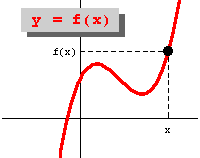Instruction
1
To explore the scope (valid values for the argument x) and the range of values (allowed values of the function y(x)). The simplest constraint is the presence in the expression of trigonometric functions, roots or fractions with a variable in the denominator.
2
To see whether the function is even or odd (that is, to check its symmetry about the coordinate axes) or periodic (in this case, the compound of the graph will be repeated).
3
To investigate the zeros of the function, that is, the intersection with the coordinate axes: whether they, and if so, to mark characteristic points on the workpiece graphics and explore intervals znakpatenta.
4
Find the asymptotes of the graph of a function, vertical and inclined.
For finding vertical asymptotes are investigated break points left and right, to find the oblique asymptotes the limit separately at plus infinity and minus infinity of the relationship of the function to x, i.e. the limit of f(x)/x. If it is finite then this ratio k from the equation of the tangent (y =kx+b). To find b, you need to find the limit at infinity in the same direction (that is, if k is at plus infinity, then b to plus infinity) the difference of (f(x)-kx). Substitute b in the equation of the tangent. If k or b could not be found, that is, the limit is infinite or does not exist, then there are no asymptotes.
For finding vertical asymptotes are investigated break points left and right, to find the oblique asymptotes the limit separately at plus infinity and minus infinity of the relationship of the function to x, i.e. the limit of f(x)/x. If it is finite then this ratio k from the equation of the tangent (y =kx+b). To find b, you need to find the limit at infinity in the same direction (that is, if k is at plus infinity, then b to plus infinity) the difference of (f(x)-kx). Substitute b in the equation of the tangent. If k or b could not be found, that is, the limit is infinite or does not exist, then there are no asymptotes.
5
Find the first derivative of the function. Find the function value at the obtained extremum points, and specify the field monotone increasing/decreasing functions.
If f'(x)>0 at each point of the interval (a,b), the function f(x) is increasing on this interval.
If f'(x)<0 at every point of the interval (a,b), the function f(x) is decreasing on this interval.
If the derivative at the transition point x0 changes its sign from positive to negative, then x0 is a maximum point.
If the derivative at the transition point x0 changes its sign from minus to plus, then x0 is a minimum point.
If f'(x)>0 at each point of the interval (a,b), the function f(x) is increasing on this interval.
If f'(x)<0 at every point of the interval (a,b), the function f(x) is decreasing on this interval.
If the derivative at the transition point x0 changes its sign from positive to negative, then x0 is a maximum point.
If the derivative at the transition point x0 changes its sign from minus to plus, then x0 is a minimum point.
6
Find the second derivative, the first derivative of the first derivative.
It will show the convexity/concavity and inflection points. Find the function values at the points of inflection.
If f"(x)>0 at each point of the interval (a,b), the function f(x) is concave on this interval.
If f"(x)<0 at every point of the interval (a,b), the function f(x) is convex on this interval.
It will show the convexity/concavity and inflection points. Find the function values at the points of inflection.
If f"(x)>0 at each point of the interval (a,b), the function f(x) is concave on this interval.
If f"(x)<0 at every point of the interval (a,b), the function f(x) is convex on this interval.
Useful advice
It is possible to build a to make a few intermediate images, in order to avoid confusion and the loss of some data and marks on the workpiece graphics
